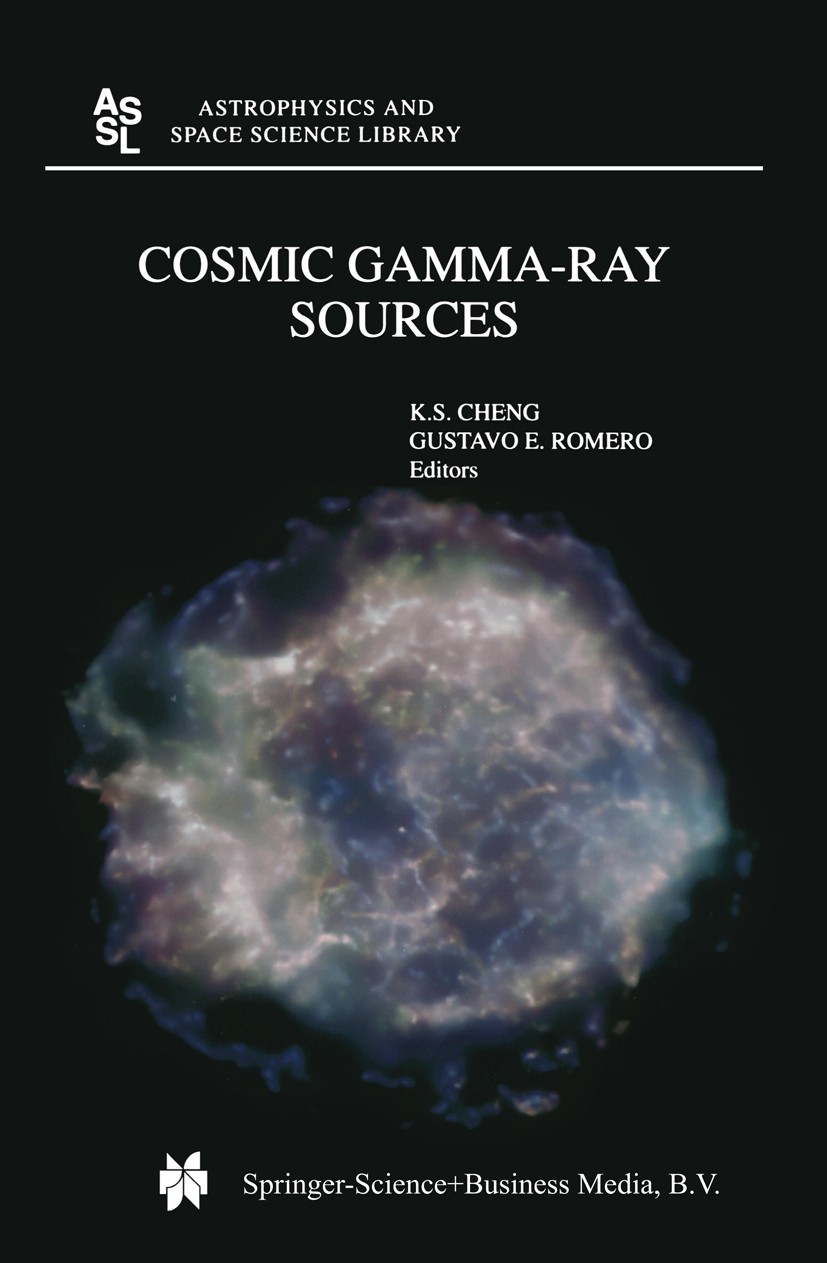| 书目名称 | Cosmic Gamma-Ray Sources | | 编辑 | K. S. Cheng,Gustavo E. Romero | | 视频video | http://file.papertrans.cn/239/238879/238879.mp4 | | 丛书名称 | Astrophysics and Space Science Library | | 图书封面 |  | | 描述 | Gamma-ray astronomy has undergone an enormous progress in the last 15 years. The success of satellite experiments like NASA‘s Comp ton Gamma-Ray Observatory and ESA‘s INTEGRAL mission, as well as of ground-based instruments have open new views into the high-energy Universe. Different classes of cosmic gamma-ray sources have been now detected at different energies, in addition to young radio pulsars and gamma-ray bursts, the classical ones. The new sources include radio quiet pulsars, microquasars, supernova remnants, starburst galaxies, ra dio galaxies, flat-spectrum radio quasars, and BL Lacertae objects. A large number of unidentified sources strongly suggests that this brief enumeration is far from complete. Gamma-ray bursts are now estab lished as extragalactic sources with tremendous energy output. There is accumulating evidence supporting the idea that massive stars and star forming regions can accelerate charged particles up to relativistic ener gies making them gamma-ray sources. Gamma-ray astronomy has also proved to be a powerful tool for cosmology imposing constraints to the background photon fields that can absorb the gamma-ray flux from dis tant sources. All this | | 出版日期 | Book 2004 | | 关键词 | Galaxy; Quasar; astronomy; astrophysics; hadron; stars | | 版次 | 1 | | doi | https://doi.org/10.1007/978-1-4020-2256-2 | | isbn_softcover | 978-90-481-6625-1 | | isbn_ebook | 978-1-4020-2256-2Series ISSN 0067-0057 Series E-ISSN 2214-7985 | | issn_series | 0067-0057 | | copyright | Springer Science+Business Media Dordrecht 2004 |
The information of publication is updating

|
|
 |Archiver|手机版|小黑屋|
派博传思国际
( 京公网安备110108008328)
GMT+8, 2025-11-15 08:09
|Archiver|手机版|小黑屋|
派博传思国际
( 京公网安备110108008328)
GMT+8, 2025-11-15 08:09


